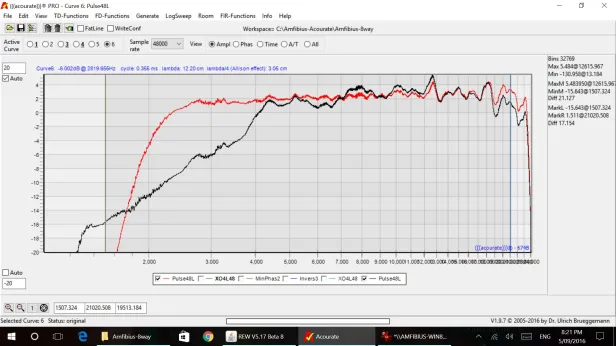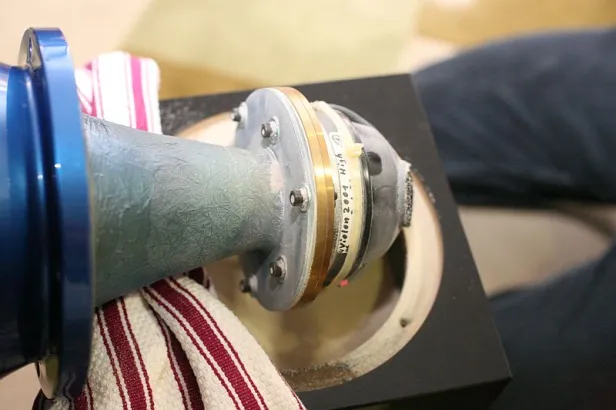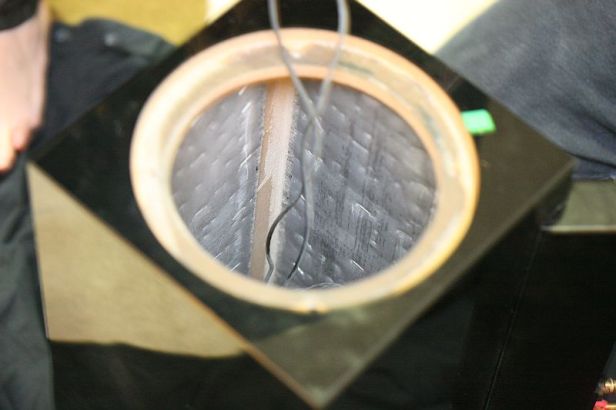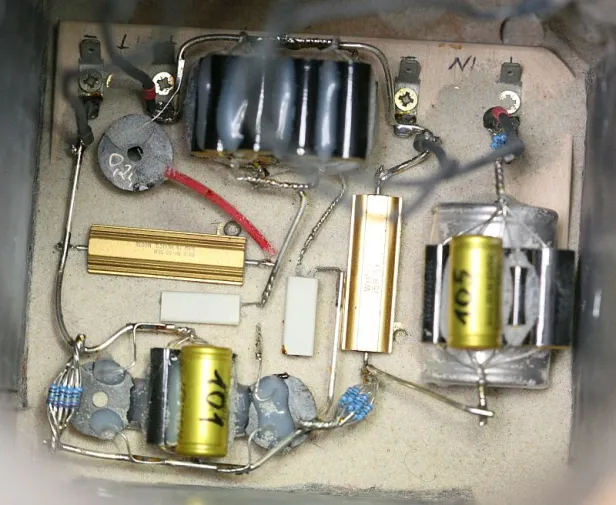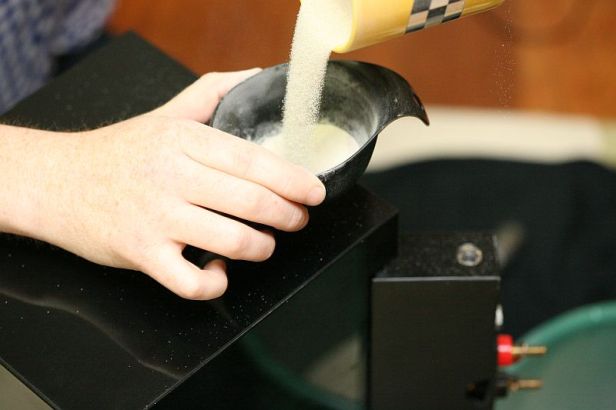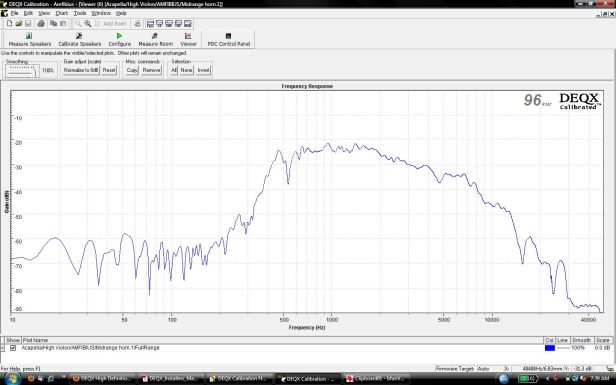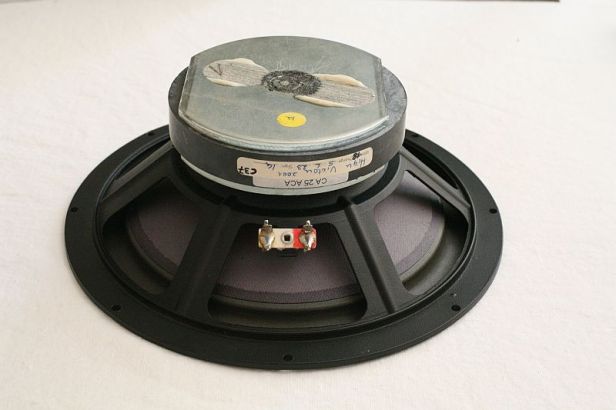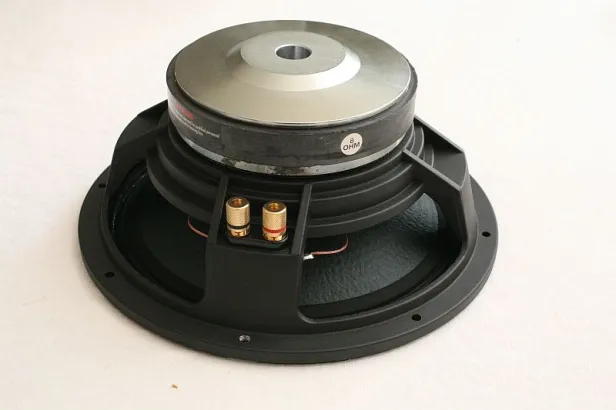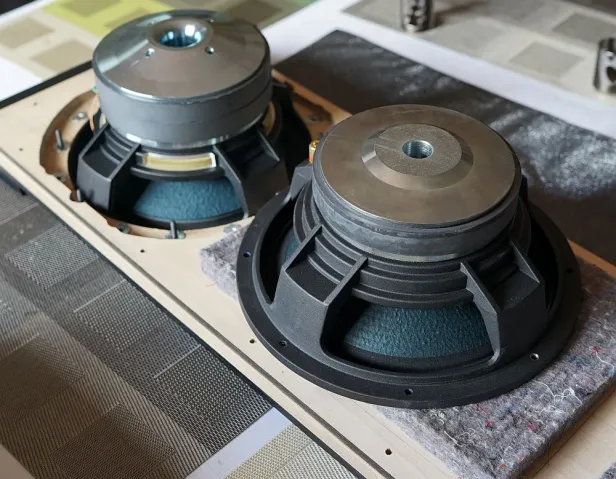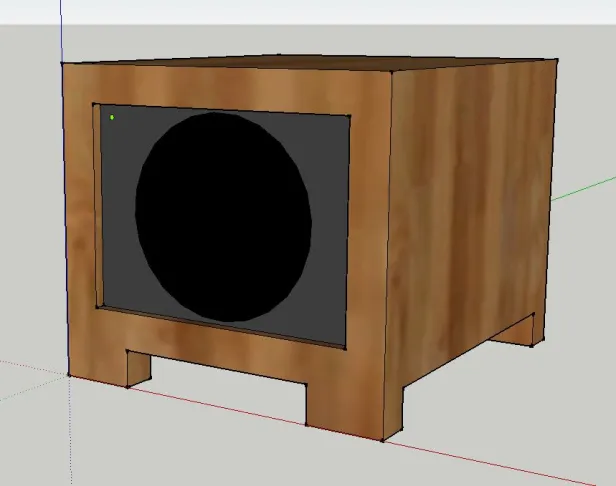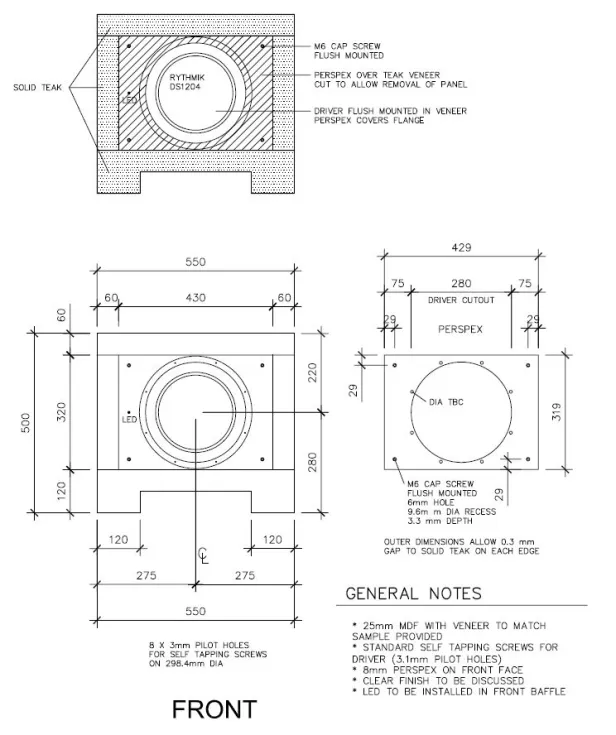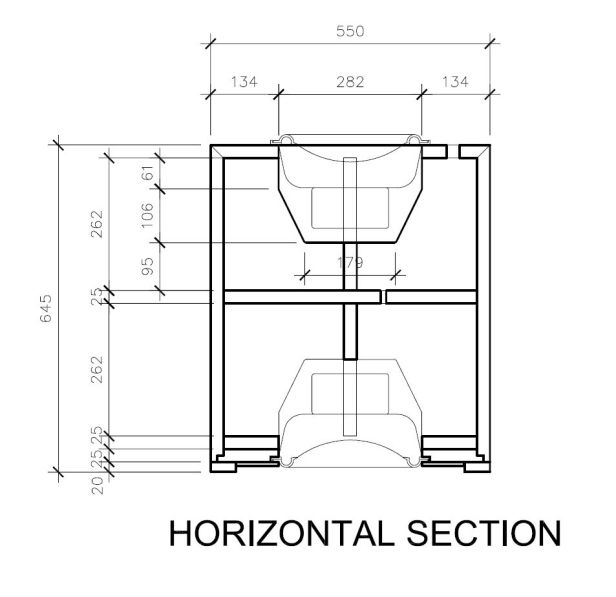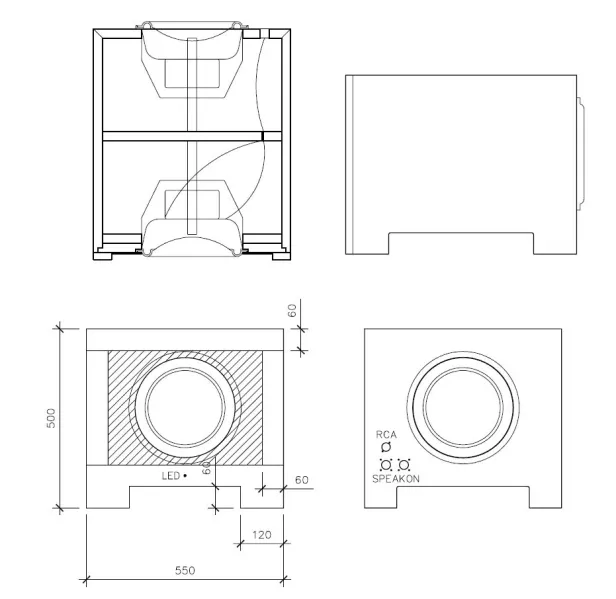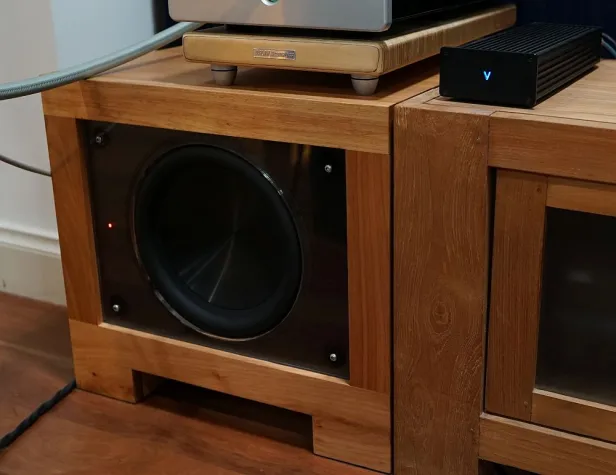Keith_W
Major Contributor
I have resisted making a system thread on ASR for quite some time for many reasons. (1) ASR members seem to be anti-high end audio. (2) I do some things in my system that many in ASR might deem controversial.
I will start off the thread with a few posts describing the architecture and hardware of the system, then I will post measurements. I have considered in detail every aspect of this system.
The system is a mish-mash of different philosophies for a simple reason - I changed my mind. I am open-minded about learning, and I can and do abandon beliefs if I am persuaded. I might seem stubborn to some of you, but that is because my brain is a little bit slow, but eventually I do come around. The evidence that I can and do change beliefs can be seen in the hardware you see before you.
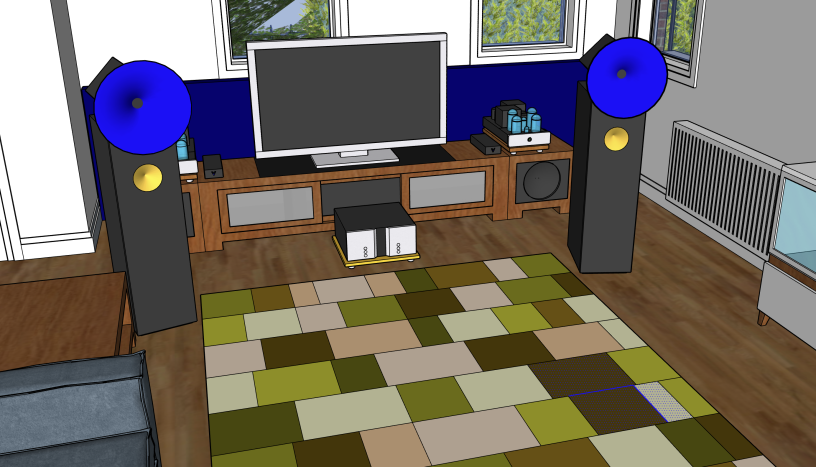
When I first bought these speakers 15 years ago, I was a subjectivist. I loved the way the top end sounded, but I immediately noticed a bass problem with the speaker. I went through the usual recommendations which left me unsatisfied - high end speaker cable (I still have them), then more powerful valve amps. Then I moved on to some real solutions - first, I bi-amp'ed the speaker (SS amp for the woofers, valve amp for the top). This brought improvement, but not enough. So in came a pair of subwoofers. It was better, but not good enough. Then I bought a DEQX and started my DSP journey. I never obtained satisfactory results - in hindsight this was because I could not operate the thing properly, and did not know how to interpret the measurements. I got rid of it and bought a Marchand passive crossover. That worked better than the DEQX, but I was still not satisfied.
Around 2015, I heard about DSP with Acourate. I saw a post on WhatsBestForum here by "Blizzard" (aka @dallasjustice on ASR). To me it sounded incredibly advanced, and the more I read about it, the more excited I became at the possibilities. @dallasjustice and I exchanged a few PM's, and he rang me from the USA to sell me on the idea of using Acourate. This was truly a life-changing moment for me in this hobby. Gradually I started to shed subjectivist beliefs as I learnt more, could hear the improvements being made to my system, and marvelled how they were REAL improvements with measurable results instead of imagined ones where I wasn't sure of what I was hearing.
What you see in these pictures are remnants of a long abandoned approach to audio, a time when I believed in high end DAC's, amplifiers, cables, and the like. Mixed in with this older equipment are more modern stuff. For example, this fully active system requires 8 interconnects. Two pairs of these interconnects are high end audio cables, which I have owned for years. The rest of the cabling is ultra cheap stuff from pro audio shops.
Hardware Architecture

The speakers are Acapella High Violons. These are delivered as a 3-way speaker with a horn loaded plasma tweeter, a midrange horn, and a conventional woofer. The speaker has been dissected and modified. The woofers that came with the speaker were replaced with a pair of prototypes from SGR Audio in Melbourne, manufactured by Lorantz (also in Melbourne). The passive crossovers have been bypassed. Each driver has its own amplifier channel and DAC channel and individual filter made in Acourate.
Not shown in the diagram is some room treatment. Normally they are stacked behind the TV, but I can deploy them around the room if needed.
Also not shown is the measurement setup - I own two Behringer ECM8000's, an Earthworks M30 mic, and a RME Fireface UC.
Software Architecture

The software setup is pretty simple, the above diagram explains it all.
Although the diagram shows two convolvers, I actually have licenses for 3 - JRiver, Acourate Convolver, and HQPlayer. I have uninstalled HQP from the system because it is CPU intensive and inconvenient to use. I use Acourate Convolver daily because I like the filter bank feature, I can switch between different filters and do A-B comparisons. I can also control it from my tablet, so no need to get off the sofa to change filters! Not shown in the diagram is the VST pipeline. I use a Pultec VST, pKane's PKHarmonic, and uBACCH.
I will start off the thread with a few posts describing the architecture and hardware of the system, then I will post measurements. I have considered in detail every aspect of this system.
The system is a mish-mash of different philosophies for a simple reason - I changed my mind. I am open-minded about learning, and I can and do abandon beliefs if I am persuaded. I might seem stubborn to some of you, but that is because my brain is a little bit slow, but eventually I do come around. The evidence that I can and do change beliefs can be seen in the hardware you see before you.

When I first bought these speakers 15 years ago, I was a subjectivist. I loved the way the top end sounded, but I immediately noticed a bass problem with the speaker. I went through the usual recommendations which left me unsatisfied - high end speaker cable (I still have them), then more powerful valve amps. Then I moved on to some real solutions - first, I bi-amp'ed the speaker (SS amp for the woofers, valve amp for the top). This brought improvement, but not enough. So in came a pair of subwoofers. It was better, but not good enough. Then I bought a DEQX and started my DSP journey. I never obtained satisfactory results - in hindsight this was because I could not operate the thing properly, and did not know how to interpret the measurements. I got rid of it and bought a Marchand passive crossover. That worked better than the DEQX, but I was still not satisfied.
Around 2015, I heard about DSP with Acourate. I saw a post on WhatsBestForum here by "Blizzard" (aka @dallasjustice on ASR). To me it sounded incredibly advanced, and the more I read about it, the more excited I became at the possibilities. @dallasjustice and I exchanged a few PM's, and he rang me from the USA to sell me on the idea of using Acourate. This was truly a life-changing moment for me in this hobby. Gradually I started to shed subjectivist beliefs as I learnt more, could hear the improvements being made to my system, and marvelled how they were REAL improvements with measurable results instead of imagined ones where I wasn't sure of what I was hearing.
What you see in these pictures are remnants of a long abandoned approach to audio, a time when I believed in high end DAC's, amplifiers, cables, and the like. Mixed in with this older equipment are more modern stuff. For example, this fully active system requires 8 interconnects. Two pairs of these interconnects are high end audio cables, which I have owned for years. The rest of the cabling is ultra cheap stuff from pro audio shops.
Hardware Architecture

The speakers are Acapella High Violons. These are delivered as a 3-way speaker with a horn loaded plasma tweeter, a midrange horn, and a conventional woofer. The speaker has been dissected and modified. The woofers that came with the speaker were replaced with a pair of prototypes from SGR Audio in Melbourne, manufactured by Lorantz (also in Melbourne). The passive crossovers have been bypassed. Each driver has its own amplifier channel and DAC channel and individual filter made in Acourate.
Not shown in the diagram is some room treatment. Normally they are stacked behind the TV, but I can deploy them around the room if needed.
Also not shown is the measurement setup - I own two Behringer ECM8000's, an Earthworks M30 mic, and a RME Fireface UC.
Software Architecture

The software setup is pretty simple, the above diagram explains it all.
Although the diagram shows two convolvers, I actually have licenses for 3 - JRiver, Acourate Convolver, and HQPlayer. I have uninstalled HQP from the system because it is CPU intensive and inconvenient to use. I use Acourate Convolver daily because I like the filter bank feature, I can switch between different filters and do A-B comparisons. I can also control it from my tablet, so no need to get off the sofa to change filters! Not shown in the diagram is the VST pipeline. I use a Pultec VST, pKane's PKHarmonic, and uBACCH.


